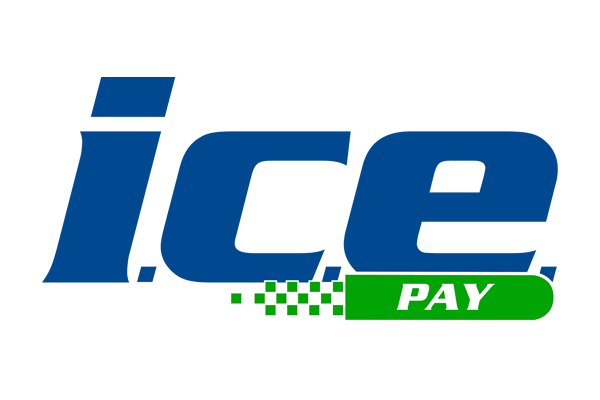
PAYE Modernisation
For Employers
Under the Irish PAYE system, every employer needs to deduct Income Tax (IT), Pay Related Social Insurance (PRSI), Universal Social Charge (USC) and Local Property Tax (LPT) from an employee’s’ gross pay. PAYE Modernisation has introduced significant changes to how and when a business sends and communicates PAYE information to Revenue. Going forward, all employers must calculate and report their employees pay and deductions in real-time, every pay period.
The PAYE Modernisation legislation modifies the way employers submit their PAYE information to Revenue. For some employers, payroll is still a manual process and using payroll software is perceived as an additional cost and overhead. Where manual processes are used, Revenue recognises that PAYE Modernisation increases the administrative burden on employers. By using payroll software, employers will save time by streamlining their payroll processing and real-time reporting.
Our Employee Guide
What We Know
Revenue have now abolished previous employer reporting obligations such as P30s, P45s, P46s, P35s and the generation of P60s. It is no longer be possible for employers to submit their P35 payroll file through to Revenue at the end of the tax year. The final year for the P35 return is 2018 (which needs to be submitted by February 2019). Employers must calculate the correct tax deductions for employees as they are being paid and in real-time. Through submissions known as Payroll Submission Requests (PSRs), Revenue will have the most up-to-date information to ensure that each employee is subject to appropriate levels of tax deductions. Employees benefit as they will not overpay or underpay tax.
Most employers currently use payroll software to manage their payroll. Revenue has worked and will continue to work with payroll Software providers to ensure software caters for the employer payroll reporting requirements of PAYE Modernisation. PAYE Modernisation compliant payroll software ensures that the correct payroll files are produced and seamlessly submitted to Revenue. The Revenue Commissioners are strongly recommending that businesses and payroll processors review their current payroll systems to ensure they can cater for the requirements of PAYE Modernisation. Be aware that manually processing payroll with PAYE Modernisation requires additional time and could increase the possibility of human error. Miscalculating the payroll reports for Revenue will result in non-compliance and potentially lead to penalties.
PAYE Modernisation FAQs
What is PAYE Modernisation?
PAYE Modernisation is a new initiative that is being introduced by Revenue. The existing PAYE system has been in place since 1960 and has not been updated since its introduction. Revenue have been working to update and modernise the PAYE system, in particular tackling the problem of overpayment and underpayment of taxes. With PAYE Modernisation, the main change affecting employers is the real-time reporting to Revenue – a submission will need to be made each payroll run. In most cases, this means a file will be submitted either weekly or monthly. As a result, this will eliminate the need to file P30, P45, P46, P60 and P35 returns as information will be returned to Revenue instantaneously.
When will PAYE Modernisation be introduced?
The new PAYE system, known as PAYE Modernisation will be introduced on the 1st of January 2019.
What should employers be doing to prepare for PAYE Modernisation?
All employers must ensure that they have registered all of their employees, received an up-to-date tax credit certificate (P2C) for all employees and checked that they have the correct PPS numbers for all employees. In preparation for PAYE Modernisation, Revenue will also be asking employers to send a list of their employees to Revenue. This list will ensure that both Revenue and employer records are accurate and up-to-date. The facility to upload the List of Employees is now available on ROS. Employers should also ensure that they are using PAYE Modernisation compliant payroll software, such as Thesaurus Payroll Manager or BrightPay. Book a demo today to find out how PAYE Modernisation will operate with payroll software.
Why are Revenue changing the way PAYE is currently processed?
PAYE Modernisation is being introduced to help all stakeholders – employers, employees and Revenue. For employers, the value will be a significant reduction in the administrative burden. For all stakeholders, it will mean that employers and employees are only paying the tax that is due to be paid. The key goal is to eliminate overpayment and underpayment of taxes so that the whole system is much more streamlined.
Did this system work in the UK after ‘Real Time Information’ (RTI) was introduced in April 2013?
A recent review of the success of RTI revealed that the system did achieve what it set out to do. RTI has enabled the tax and benefits system to become more responsive than ever before – PAYE payments and debt are dealt with more effectively and the flow of PAYE payments to the Exchequer has also improved. In Ireland, we have the opportunity to improve on certain aspects of the UK system that were flawed and get it right from the outset.
What will PAYE Modernisation mean for employers?
The reporting process by employers to Revenue will be fully integrated into the employer’s payroll run, thereby contributing to a significant streamlining of business processes and reducing administrative cost for employers. Instead of a yearly P35, a “mini P35”, known as a Payroll Submission Request (PSR), will need to be submitted to Revenue each payroll run. Along with employee pay information, details of employees starting and employees leaving will also be included in the PSR. Checking for updated tax credits and cut-off points will also be an integral part of each payroll run.
How will PAYE Modernisation affect employees?
Employees will be able to log in to Revenue (MyAccount) and view what has been submitted in relation to them by the employer. Employees will be able to allocate their credits and cut-offs between multiple employments. At the year-end, employees will be able to view and print their official certificate of earnings and deductions. Overall, PAYE Modernisation will also result in a reduction of the occurrence of overpayment and underpayment of taxes.
Can I still do payroll manually with PAYE Modernisation?
Revenue are providing a facility for employers to manually upload payroll submissions. However, it is recommended to use payroll software, as manually doing this will be very cumbersome and time-consuming. Employers would need to login to ROS and enter all of the required details for all of their employees, a bit like manually completing a P35 each pay period. Also, before processing the payroll in any week, they would need to religiously log in to ROS to get details of tax credits and cut-off points. This facility in ROS will only be available for employers with 5 or fewer employees. It should also be noted that the manual ROS input screens will not calculate taxes.
Will Revenue be providing a free payroll software for small employers to assist them with PAYE Modernisation?
No, Revenue will not be providing free software for small employers. For people that don’t have the software, there will be an online template where they can fill in how they have calculated their payroll for each of their employees on the ROS system. However, Thesaurus Software is planning on offering a single employer version of BrightPay for 2019 which will be free for one employee and will be useful for micro employers who are currently manually processing payroll.
Will payroll software be more complicated as a result of PAYE Modernisation?
Payroll software will require much more development to implement PAYE Modernisation. However, for Thesaurus Payroll Manager and BrightPay customers, the payroll software will be easy to use, with the ability to create and send submissions to Revenue at the click of a button.
Will PAYE Modernisation create additional work for payroll operators?
Not necessarily, payroll operators will be required to send submissions to Revenue each pay run, however. PAYE Modernisation eliminates mundane, time-consuming tasks such as P45s and P46s. The retrieval of tax credits and cut-offs will also be automated meaning less work. However, for director only companies who usually run the payroll once per year, there will be an increased workload as they will be required to run the payroll in real time.
Will I still need to complete a P35 after year end?
No, as Revenue will be receiving file submissions each pay period, the annual P35 will no longer be required. In addition, this periodic file will eliminate the need for P30s. A P35 will still be required for the 2018 year but after that, there will be no more P35s.
Do I still need to issue a P60 for employees?
Except for the 2018 year, you will no longer be obliged to produce a P60 for your employees. Revenue will produce an end of year statement for all employees. At the end of a tax year, the individual taxpayer will be able to view and print their official certificate of earnings and deductions directly from the MyAccount portal on the Revenue website.
Do I still need to issue a P45 when an employee ceases employment?
The files being submitted each pay run will include details of employees ceasing employment. This will mean that P45s are no longer required to be completed by the employer.
What is a Revenue Payroll Notification?
A Revenue Payroll Notification (RPN) will replace the current tax credit certificate (P2C). It will be used to retrieve tax credits and cut-off points for new and existing employees. Employers will be able to request an RPN from Revenue directly through payroll software, where employers will have instant access to changes to an employee’s tax credits.
Work Smarter Not Harder
ICE Group never fails to deliver on the key aspects of payroll management that matter to our clients. Contact us today for a Payroll Service Consultation.

